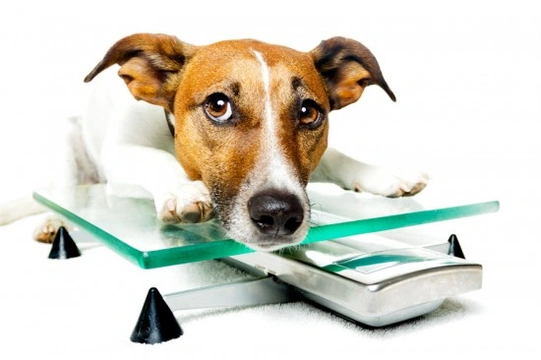
Obesity in Dogs
Obesity in dogs is one of the fastest growing pet health issues today; however it is also one of the most preventable. The cause of obesity is simple - the intake of energy (food) is greater than the energy used (exercise). This deposits excess fat over the body creating the condition of being overweight, as it would in a human. This puts unnecessary strain on the internal organs, joints and bones and can also be responsible for many chronic, serious and sometime fatal diseases such as diabetes and respiratory problems. There is also an increased risk for the dog should it need to be anesthetised during an operation.
Dogs are, on the whole, reliant on humans for providing their food. The strong bond that can develop between a dog and its owner is enjoyable for both parties and as an owner you are bound to want to treat your best friend. Sharing human foods with dogs and feeding titbits from the table are more commonplace these days as more and more dogs share our home, instead of being kept as working animals. Many scientists firmly place the blame of the boom in canine obesity at the door of the owners by simply treating to much! However, that is not the only issue. The increase and sometimes confusing choice of dog food availably is bewildering! How do you know what is the best food for your dog? Of course, it is wise to seek veterinary advice in some cases, but with the increase in use of dry, complete dog foods, it is very easy to get it wrong. Even when following the manufactures guidelines on the packet, the serving of food in your dogs bowl can look very meager and mean! In all likelihood, the recommended serving for your dog's type and size will be correct - it will provide the amount of energy needed to maintain a healthy weight, provided your dog also leads an active, balanced life. Not convinced the amount of dry food is correct? Try adding warm water to a serving overnight and see how much it has swollen by the morning, and you will see how much there is in reality!
The fact that many people overfeed their dogs goes hand in hand with the fact that we also now lead more sedentary lifestyles, and that counts for our canine companions to! Just 50 years ago, there were double the numbers of working dogs in the UK than there are today, meaning most dogs lead a comparatively pampered life to their ancestors. A dogs' body is like a humans' - it needs to move and expend energy to remain healthy. Of course, there is a difference in energy requirements in different breeds of dog - a highly energetic Border Collie may need over 2 hours of exercise a day, where as a Pomeranian will need considerably less.
An old, but wise, saying goes, 'Prevention is better than a cure', and in the case of obesity, this is the case. But if your dog is overweight, the first step you need to take to help is to seek advice from your vet. Many vets now offer free services such as monthly weigh ins and doggie health clubs - why not give it a whirl? Together, you and your vet can put together a realistic feeding and exercise schedule suitable for the age, breed and needs of your dog. With this in mind, you need to remember that results will not happen overnight. From fat to fit, it will require your dedication, resolve and patience to achieve results. A fit, healthy dog is a happy dog, and a happy dog means a happy owner!



